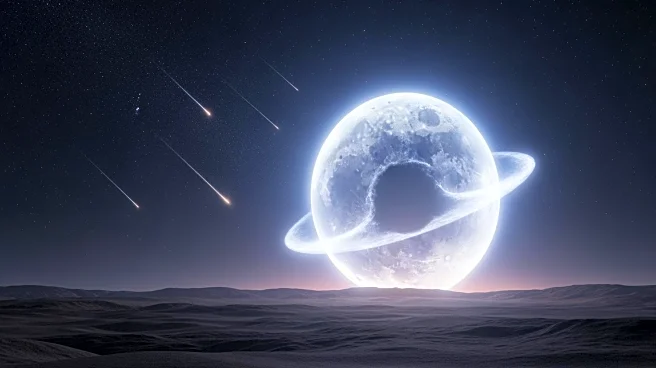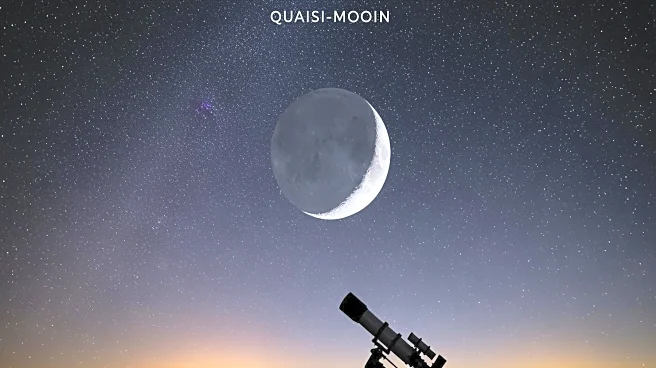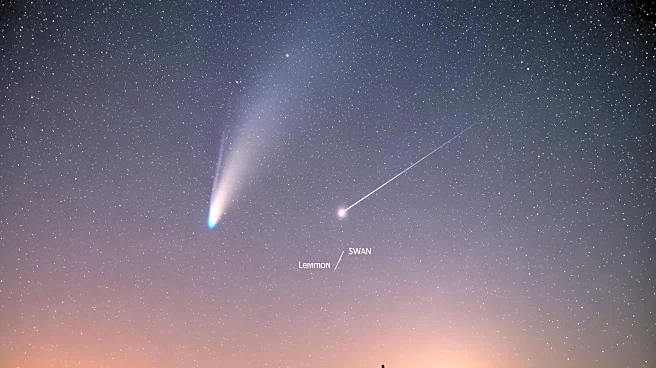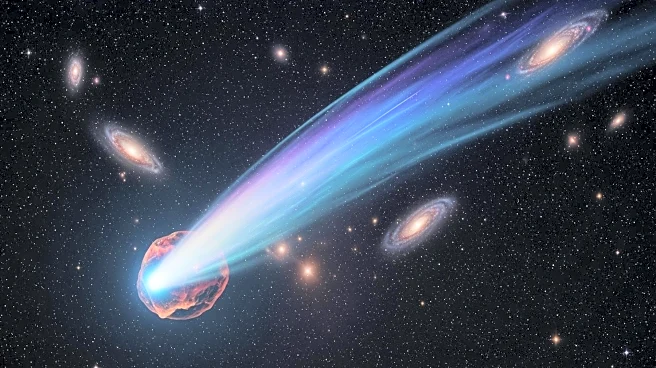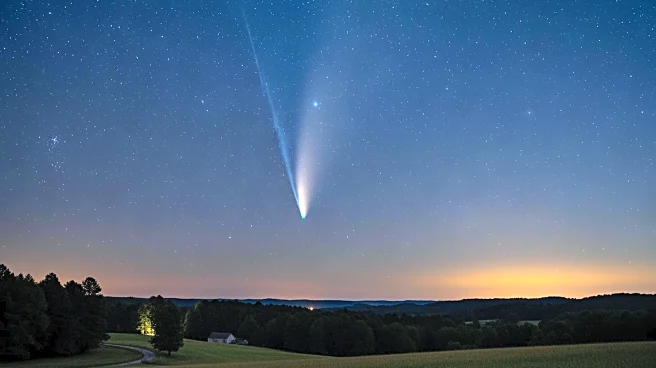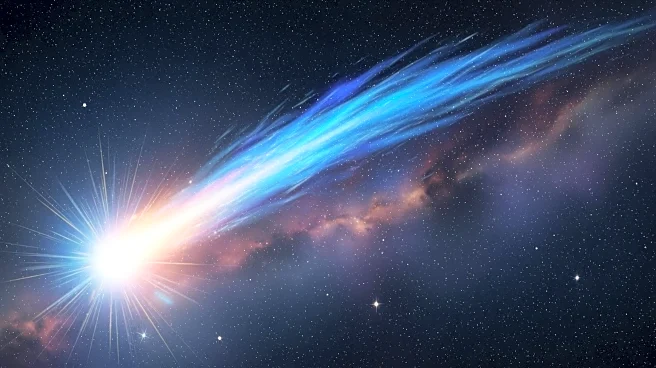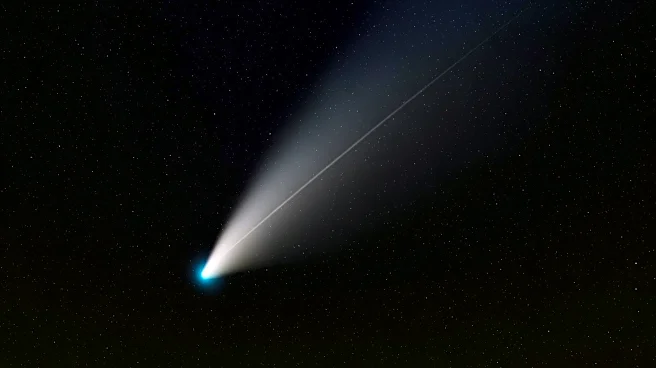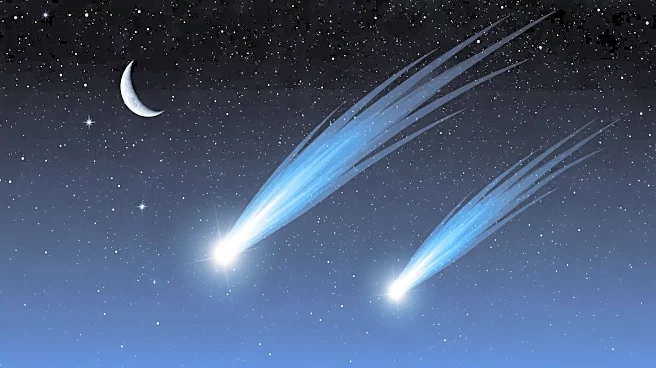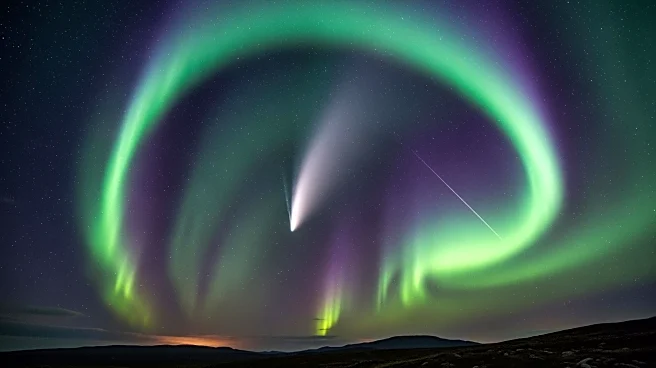What's Happening?
NASA has confirmed the existence of a quasi-moon, a small asteroid named 2025 PN7, which has been orbiting Earth for decades. Although it is not a true moon, it moves in sync with Earth's orbit. Nevadans
will not see this quasi-moon, but October offers other astronomical events, including Comet Lemmon's peak and several meteor showers. The quasi-moon is expected to remain in Earth's gravitational neighborhood until 2083.
Why It's Important?
The discovery of 2025 PN7 provides valuable data for astronomers studying asteroid movement and celestial mechanics. While the quasi-moon does not affect Earth directly, its presence highlights the dynamic nature of space and the importance of monitoring near-Earth objects. Upcoming meteor showers and Comet Lemmon's visibility offer opportunities for public engagement and education in astronomy, encouraging interest in space science.
What's Next?
Astronomers will continue to study 2025 PN7 to understand its trajectory and potential interactions with other celestial bodies. Nevadans can look forward to upcoming meteor showers, including the Taurid, Leonid, Geminid, and Ursid showers, which will light up the night sky. Observers are encouraged to find dark sky locations for optimal viewing experiences.
Beyond the Headlines
The presence of a quasi-moon raises questions about the classification of celestial bodies and the criteria for defining moons. This discovery may lead to discussions within the scientific community about the nature of orbital companions and their impact on planetary systems.
